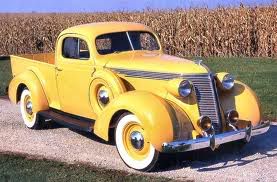redheads'n'truckbeds
New in Town
- Messages
- 23
- Location
- Sunny California
Stanley- I guess thats why I havnt done much to replace it.... 
Old wive's tale.
Plain old standard valves and seats are just fine in any car with a compression ration of around 8.5:1 or less, which would include just about anything that you are considering. The tetraethyl lead additive didn't lubricate nor did it seal all that well. Note that most cheap pre-war gas did not have a substantial lead additive. Before the mid-1930's, leaded fuel was by far the exception, rather than the rule. I've personally put a couple hundred thousand miles on various T Ford engines, most of which were fitted with original valves (cast iron heads) and plain original valve seats. These engines probably had NEVER had leaded fuel run through them.
Leaded fuel, and the additives necessary for soluability of the Tetraethyl Lead, did, however break down when burned into hydrochloric acid, which explained the short life of exhaust systems back in the "bad old days". The acid blow-by which landed in the engine oil also dissolved the main and connecting rod bearing babbit, greatly shortening engine life unless the oil was changed very frequently indeed.


 Alden 403 Moc Toe Boot - Brown Chromexcel - $680 The classic "Indy" style Alden Boot in the classic Horween brown Chromexcel.
Alden 403 Moc Toe Boot - Brown Chromexcel - $680 The classic "Indy" style Alden Boot in the classic Horween brown Chromexcel.  Grant Stone Diesel Boot Dark Olive Chromexcel - #395 Goodyear welted, Horween Chromexcel, classic good looks.
Grant Stone Diesel Boot Dark Olive Chromexcel - #395 Goodyear welted, Horween Chromexcel, classic good looks.  Himel Bros. - The Ross Mk. 1 Leather Jacket Classic D-pocket motorcycle/aviator style jacket.
Himel Bros. - The Ross Mk. 1 Leather Jacket Classic D-pocket motorcycle/aviator style jacket. Aw man, I was in love until I saw the Studebaker.Studebaker.
1937
